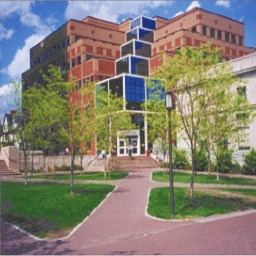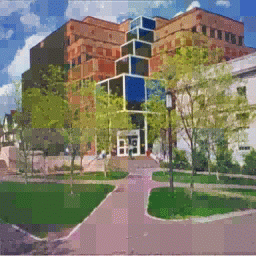

The second image of the CIT was created with the following procedure. A 2D Haar wavelet transformation of the first image was created, 75% of the resulting wavelet data was zeroed out (the 75% of the difference coefficients with the smallest absolute values), and then the second image was reconstructed from the modified wavelet data. The resulting image contains only 25% of the information found in the original, but is still quite recognizable. Zeroed wavelet data compresses well (for example, with RLE), and this procedure therefore provides a decent lossy compression technique for images. Images with higher contrast compress even better; some 2D graphics that originate on the computer are often almost indistiguishable from the original even with more than 99.5% of the data discarded.